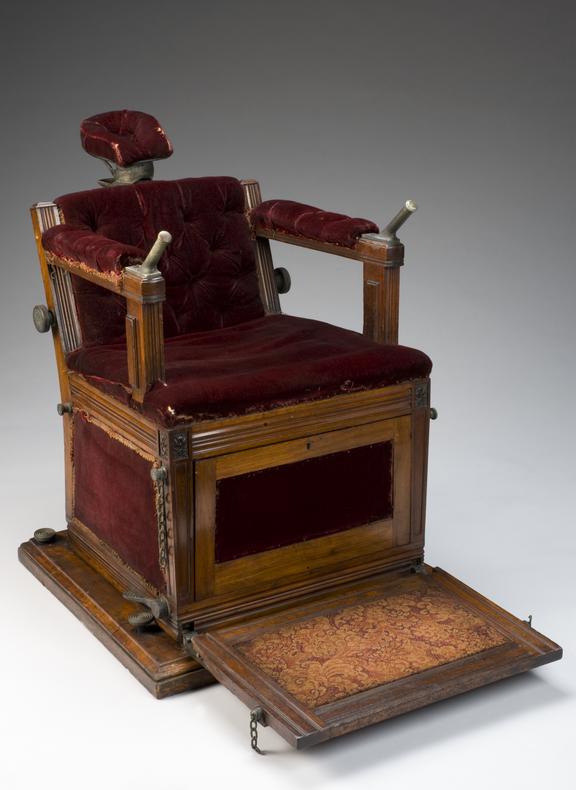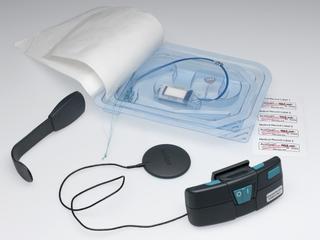Electrotherapeutic chair, London, England, 1890-1900
Electrotherapeutic chair, without foot rest
More
Torture or treatment? This imposing wooden and velvet chair is an electrotherapeutic chair. Electrotherapy was a popular treatment during the late 1800s and early 1900s. It was used for a range of ailments. It was believed electric currents passed over the skin stimulated the body to recovery. The fold-down carpeted footrest hides a compartment. This houses the battery-powered electrotherapy unit. The unit produced a current that was passed through wires to the metal hand grips. The patient sat in the chair and held these grips while an electric current was applied. The reclining chair also has an adjustable headrest. This indicates it had other medical uses such as dentistry. The ornate nature of the chair suggests there was a wealthy clientele prepared to pay for electrotherapy.
- Measurements:
-
overall: 1050 mm x 700 mm x 740 mm,
- Materials:
- frame, mahogany , upholstery, velvet, red and fittings, metal
- Object Number:
- A602153/1











